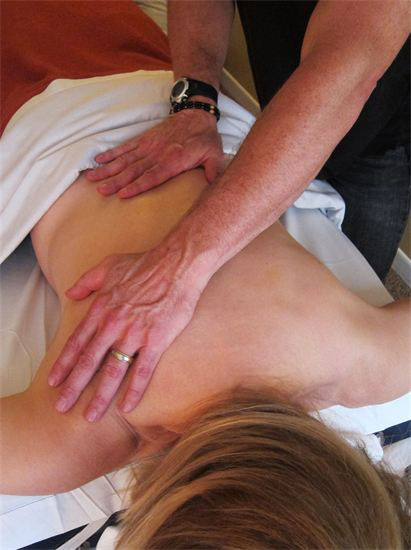 Integrative Orthopedic Massage
Integrative Orthopedic Massage
Integrative Orthopedic Massage is a highly specific form of bodywork, used to treat acute and chronic pain due to particular muscular-skeletal disorders. By combining Deep Tissue Massage, Neuromuscular Massage, Myofascial Release, Muscle Energy Technique and an understanding of Body Mechanics, we have created a form or highly effective bodywork to achieve lasting relief. This approach to massage focuses on problem areas, and therefore does not include a full body massage. The massage therapist, using his understanding of body mechanics and muscular alignment, does a complete postural assessment to ascertain the points of pain as well as the overall muscular imbalances that contribute to the pain. Integrative Orthopedic Massage alleviates both muscular and nerve pain, heals joints and muscles, increases range of motion, releases scar tissue, and most importantly, brings a person’s body back into healthy alignment. This type of massage is especially helpful for individuals that have sustained physical injury, people with jobs that involve repetitive movement and postural distortion (desk work), and clients involved with a lot of physical activity (such as athletes).
Therapists: Colin Silverman, Christina Klein, and Kim St. Aubin
 Therapeutic Deep Tissue Massage
Therapeutic Deep Tissue Massage
Therapeutic Deep Tissue Massage is deep, slow bodywork that focuses on a full-body session, and is not necessarily performed to address a specific complaint. The therapist uses both deep compression and stripping of muscles to focuses on the deeper layers of muscle tissue. This type of massage relieves deep-seated stress in the muscular and nervous system, increases blood and oxygen flow in both the superficial and deep musculature, and creates an overall feeling of well-being. Our associates’ have an understanding of orthopedic issues, and if appropriate, they may suggest further Integrative Orthopedic Massage.
Therapists: Colin Silverman, Christina Klein, and Kim St. Aubin
Muscular and Movement Re-patterning
NeuroKinetic Therapy™
NeuroKinetic Therapy is a cutting edge approach to healing thats yields fast, long-lasting relief from painful muscular and joint conditions that have not responded to other modalities. NKT® gets to the source of muscle pain and movement dysfunctions resulting from traumatic injury, over use, repetitive stress and postural misalignments. Through manual muscle testing, NKT uncovers painful compensation patterns (dysfunctional relationships between muscles and joints) and corrects them by changing the brain’s neural pathways to get the right muscles doing the right job. NKT® uses strategy, not force to achieve lasting results. David Weinstock, one of the principle founders of this manual therapy, describes it as “quick, cost effective treatment for permanent injury rehabilitation. It can bring almost instant results and is very effective in correcting misalignment and poor posture, preventing injury, and enhancing athletic performance.”
Therapists: Christina Klein and Colin Silverman
Active Release Technique (ART)
ART specifically targets muscles, ligaments and fascia by rapidly restoring pain-free motion and optimizing athletic performance.
Therapists: Christina Klein
Anatomy In Motion (AIM)
The AIM process usually starts with the feet. During a session we check how your feet, pelvis, rib cage, skull, and everything that attaches them together move in three dimensions. We check your static posture, dynamic posture, video record your gait and check your foot pressures and center of mass at the beginning and end of an session. Using this process we have been able to eliminate peoples painful conditions from the head to the feet.
AIM specifically uses the flow motion model to discover what movements are missing and shines a light on new possibilities.
Therapists: Christina Klein
Scolimethod
The scolimethod is a pain free, gentle method that allows the body to heal. Scoliosis may be considered just a symptom whether structural, functional or idiopathic (unknown reason). Treatment consists of slow, gentle myofascial release, addressing gait (walking) mechanics, repetitve movement patterns, emotional/ physical stress and digestive track issues, and relearning proper movement patterns in all three planes of motion.
Therapists: Christina Klein
